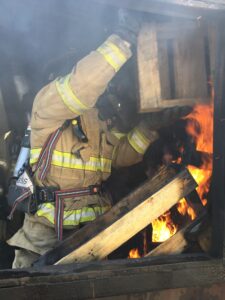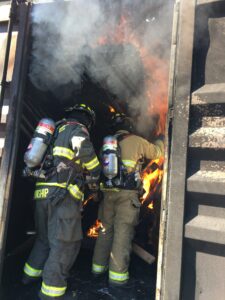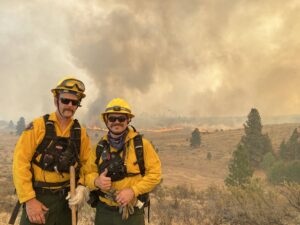

Our strategy in responding to structure fires is simple – get there fast and extinguish the fire while it’s small. When we arrive before flashover (when the temperature closest to the fire rises to a level where everything ignites), they find a fire that requires little water or extinguishment effort.
However, once flashover occurs, ordinary fire suppression techniques have little impact on life and property loss near the fire. After flashover, the smoke and heat generated reduce the chances of safe evacuation in the remainder of the building. This also presents a much greater danger to the firefighters. Unless the building is equipped with sprinklers, firefighters must take hose lines inside to extinguish the fire.
CIFR utilizes an aggressive attack strategy to push the heat, smoke and steam away from potential survivors; if this is not possible, defensive operations are deployed to contain the fire from spreading. The success of fire suppression operations depends on early intervention by response crews.
CIFR reliably delivers one engine company and rescue unit (of 6-8 firefighters) on the initial alarm. However, quick response times are dependent on the location of the fire in relationship to the fire station and availability of firefighters.
Our firefighters all go through extensive training in fire science, basic medical response, and special technical rescue, including rope rescue and marine rescue.
Career firefighters | Part-time firefighters | Volunteer firefighters | High School cadet program
Fire Suppression Training

Wildland Fire Response

Many of our firefighters are trained in wildland firefighting, so we can support other departments across the state and country during wildfire season.
Wildland firefighting also allows our firefighters to to practice new skills and techniques. Even if we don’t often fight true wildfires on Camano, it’s important for crews to get experience in complex incidents. Those skills get put to good use here, when we have summer brush fires.
Just because we don’t have wildfires now doesn’t mean we won’t in the future. We’ve seen more wildfires on the west side of the Cascades in the past few years. While we hope we never have one here, we’d rather be prepared






